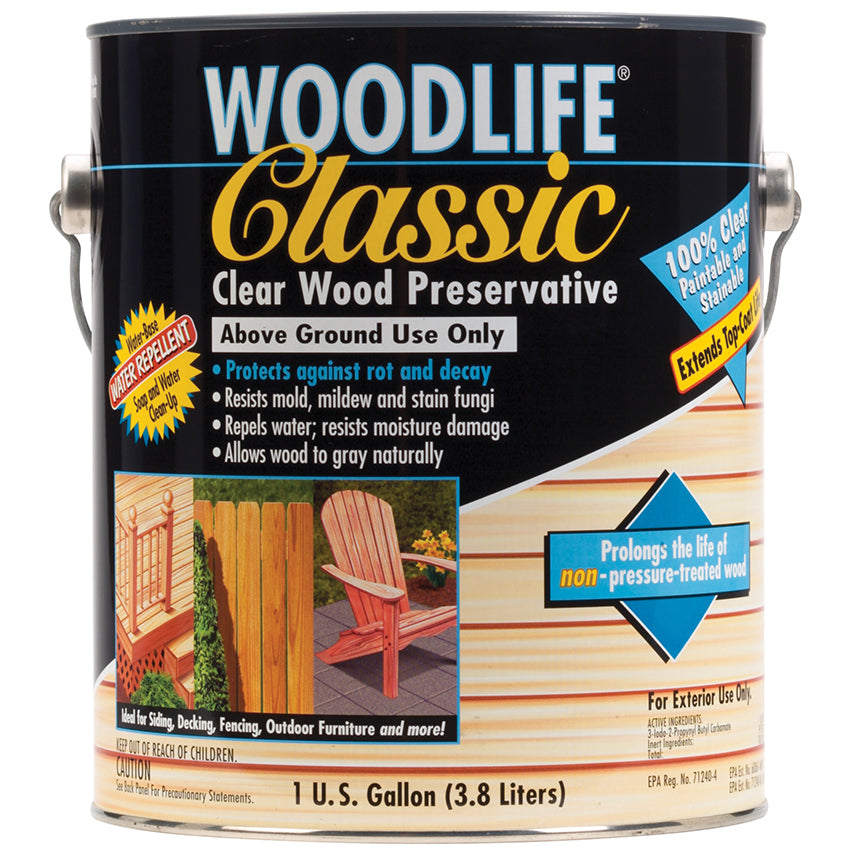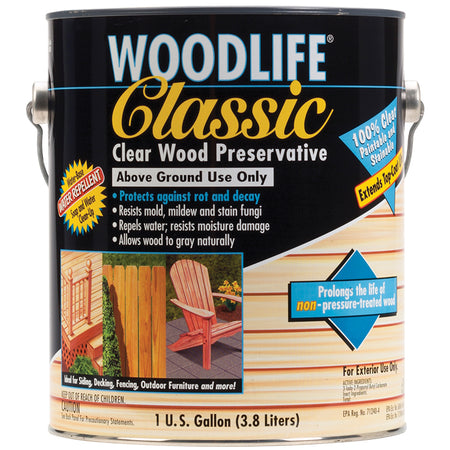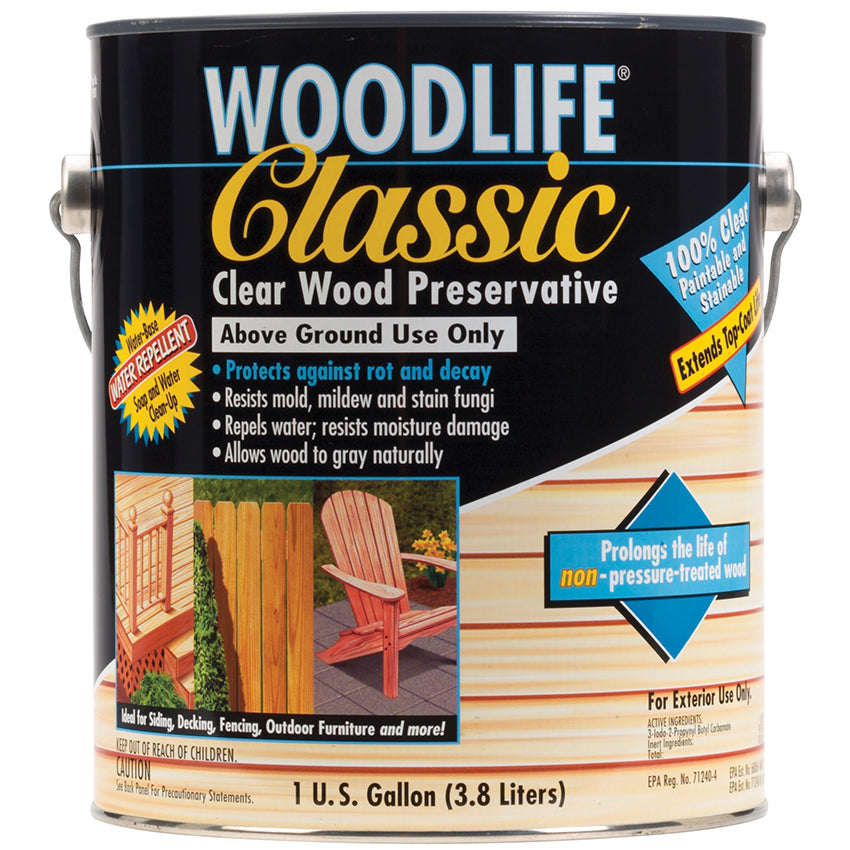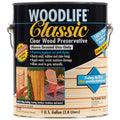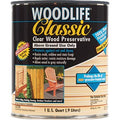COVERAGE
150-250 sq.ft./gal.
Depends on wood type and porosity.
SURFACE PREPARATION
All cutting, gluing, and sanding should be done before
applying this product. DO NOT use steel wool. Wood
surface must be dry and free of dust, dirt, debris and
standing water. This product will adhere to dry or damp
(not soaking wet) surfaces. Proper surface preparation is
required to ensure adequate penetration, adhesion, and
optimum performance.
New Wood – If wood is “brand new” intended for outdoor
installation and exposed to weather conditions for 30 days
or less, a “splash test” (see Splash Test below) should be
performed to determine if there is any surface barrier
present which would repel a new coating. Barriers include
paraffin wax, found on some types of pressure-treated
wood or mill glaze found on Cedar and Redwood. Use
Wolman® DeckStrip®or Wolman® Deck & Fence
Brightener to remove any surface barrier detected, then
conduct splash test again to confirm penetrability before
applying this product.
Splash Test - Sprinkle a few drops of water on several
areas of the surface to be coated. If the water is absorbed
rapidly, the surface is ready to be finished with Woodlife
Classic. If the water beads are not absorbed into the
wood, a surface barrier exists and must be removed.
Apply or Wolman® Deck & Fence Brightener and then test
again.
Weathered Wood - For all outdoor wood structures
except "brand new," the surface must be dry and free of
any colored paints, stains, varnishes, clear finishes, as
well as ground-in-dirt, grayed surface fibers and tannin,
algae or mildew stains. Use of a stain stripper like Wolman
DeckStrip® or Wolman® Deck &Fence Brightener is
recommended to properly prepare the surface before
applying Woodlife Classic. Once surface preparation is
completed, perform a "splash test" to confirm the
penetrability of the wood surface, and repeat cleaner or
stripper application if necessary.
IMPORTANT!
Preparing surfaces with products containing
chlorine bleach (sodium hypochlorite) alone is NOT
recommended. These products can leave dirt deposits
and degraded wood fibers on the surface, which interfere
with the penetration, adhesion and coloration of protective
coatings.
APPLICATION
Before You Start – To minimize clean-up afterward, cover
surrounding landscape and exposed brick, glass,
aluminum, and vinyl siding with cardboard, plastic or cloth
tarps. Protect plants, shrubs and vegetation from
overspray. If the surface is in direct sunlight and hot to the
touch, dampen with fresh water to cool. Remove any
standing water before beginning application. This product
will adhere to dry or damp (not soaking wet) surfaces. This
product has a milky appearance in the can and a whitish
appearance when applied, but dries clear.
IMPORTANT: Before beginning project, perform a
sample brush-out in several inconspicuous areas to
ensure the desired look is achieved. Color appearance
will vary with wood age, species and surface porosity.
Use in an area with adequate ventilation at all times. Apply
only when air (ambient) temperature is between 50-90°F(10-32°C)
and relative humidity is below 85% and when no
precipitation is expected within 24 hours. Use full strength.
Do not thin. Mix thoroughly before and during use. Apply
with a synthetic bristle brush, a ¼” short nap style roller, or
a pump style sprayer such as a Wolman BackSaver 2-Gallon Sprayer.
Dip Treatment – Pre-treatment by dip method is
recommended prior to project construction. Immerse wood
in product for 3 minutes or longer. Any surface cut after
first treatment should be retreated.
Brush, Roller, Spray - If dipping is not possible,
apply only one (1) coat by brush, roller, or spray application.
Coat ends with three (3) or more consecutive coats to give
full protection. Allow at least one (1) hour between
applications.
Airless Spray – Airless spray is recommended for
existing wood installations or when dipping is not possible.
Use a 0.011-0.021 inch tip and 100 mesh filter screen at
250-500 psi. Adjust pressure when necessary to minimize
overspray and fogging. For best results, back brush along
the grain to remove any drips or runs, and any uneven
coverage or surface puddles before the project dries.
DRY & RECOAT TIMES
Dry and recoat times are based on 70ºF and 50% relative
humidity. Allow more time at cooler temperatures. Dries to
touch in 1 hour, dry to handle in 1 hour, and can be
walked on in 6-12 hours. Allow wood to dry at least 24
hours before installation or using the treated surface.
Allow a minimum of 24 hours before over-coating with
primer, paint or stain.
COVERAGE
One gallon will cover approximately 150-250 square feet,
depending on wood age and species, surface porosity and
method of application. Rough, weathered or highly porous
surfaces will absorb more.
CAUTION: Wood surfacescan be slippery when wet.
CLEAN-UP
Clean tools and equipment immediately after use with
warm soapy water. If product has dried, mineral spirits
should be used to clean tools and equipment. Clean up
overspray, drips and splashes from surrounding surfaces
with fresh water as soon as possible. Dried spatters or
spills can be removed with mineral spirits or lacquer
thinner.

